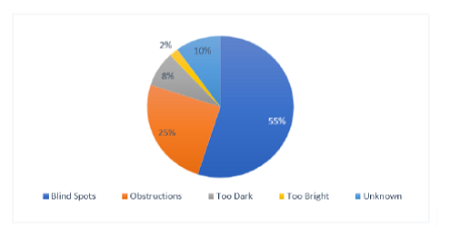


Indian Journal of Science and Technology
Year: 2022, Volume: 15, Issue: 4, Pages: 146-157
Original Article
P Vishal1, M Kranti Kumar2*
1Post Graduate Student, Department of Architecture, School of Planning and Architecture,
Andhra Pradesh, 520008, Vijayawada, India
2Assistant Professor, Department of Architecture, School of Planning and Architecture,
Andhra Pradesh, 520008, Vijayawada, India
*Corresponding Author
Email: [email protected]
Received Date:16 March 2021, Accepted Date:19 January 2022, Published Date:04 February 2022
Objectives: To accesses the impact of the sensors in preventing from struck-by hazards in the construction sites; To compare the suitability of available sensor technologies in prevention system of struck-by hazard. Method: The current demand of construction industry is to complete project in the minimum time, to achieve the goal of safety as construction sites are getting complex in terms of management challenge. Available proximity sensors were examined to choose an appropriate sensor for using in early warning system to prevent from struck-by hazards. An early warning system was proposed using ultrasound sensor, that will warn the vehicle operator by visual and acoustical methods to stop the vehicle before collision between vehicle and personal / equipment / material and will prevent from struck-by hazards. Findings: It has been proven that blind spots (visibility problem) are the main reason for struckby accidents. Ultrasound sensors uses sound technology, so that, they are suitable to detect objects in non-visible conditions (Rain, Fog, Night etc.). Ultrasound technology is independent and does not necessitate external hardware installation or processing facilities once it is integrated on the machinery. Proposed early warning system will help construction managers to manage sites more effectively. Novelty: Many researchers have done various studies on struck-by hazard prevention in construction. However, there is no enough focus on, particularly using ultrasound sensors to prevent from struckby hazards. Hence to assess the capability and use of ultrasound sensors in this area of construction is been done
Keywords: Construction Safety; Safety Management; Ultrasound Sensor; Struckby Hazard; Prevention System; Early Warning System
© 2022 Vishal & Kumar. This is an open-access article distributed under the terms of the Creative Commons Attribution License, which permits unrestricted use, distribution, and reproduction in any medium, provided the original author and source are credited.
Published By Indian Society for Education and Environment (iSee)
Subscribe now for latest articles and news.